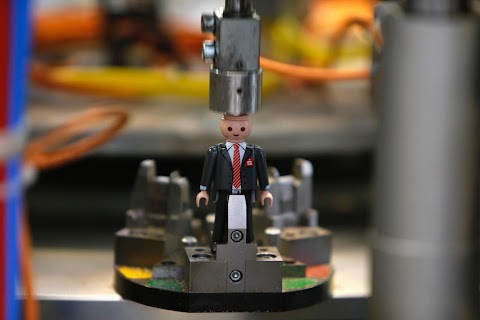
Plastic people
 Darrin Zammit Lupi
Darrin Zammit Lupi
Playmobil figures may stand just two and three-quarter inches tall, but their cultural impact has loomed large.
First marketed in 1974, Playmobil is now celebrating its 40th anniversary. The diminutive figurines are currently produced at a rate of 3.2 per second - faster than the growth rate of the world's human population - according to the manufacturers.

Strangely enough, the oil crisis of the 1970s was a driving force behind the introduction of Playmobil because it reduced the availability of plastic. The figurines had the advantage of being so small that they used relatively little of the material.
The toys, produced by German company Geobra Brandstatter, were a hit and the firm's Malta plant now has an annual capacity of around 100 million figures.
Slideshow

Coloured pigments used to make Playmobil figures are seen on the production line at the company's factory in Malta.

An employee fills containers with coloured pigments.

Another worker pours Playmobil figure hair pieces into an assembly machine.

The toys' heads are seen on the production line.

Heads of Playmobil figures lie in their injection moulds.

The toys' arms are lined up at the Malta factory.

Playmobil figures are seen on the assembly line.

The toys pile up beneath a conveyor belt.

An employee works in the packaging section of the Playmobil factory.

Playmobil figures stand on top of air conditioning unit controls.

A child plays with a figure at the Playmobil FunPark, next to the Malta factory.

A boy plays in front of a poster showing a Playmobil "Knights of Malta Grand Master" figure. The company has four fun parks, in Malta, France, Greece and the United States.

A child plays with a Playmobil house and figures at the Playmobil FunPark.

A range of figures are seen at Geobra Brandstaetter's plant in Zirndorf, Germany.














